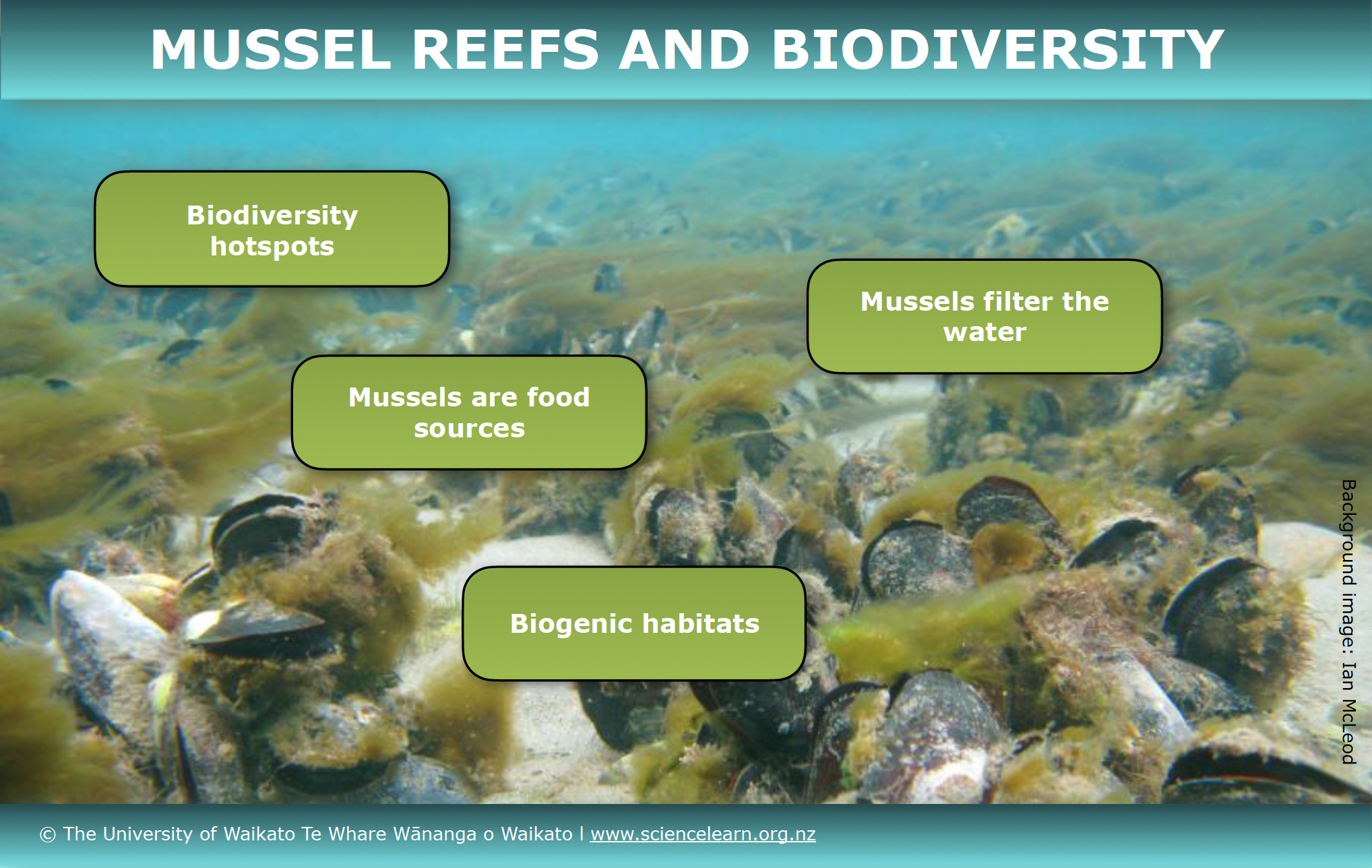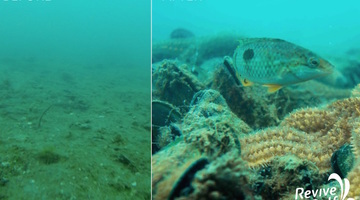Mussel reefs are biodiversity hotspots.

Mussel reefs are biodiversity hotspots that offer crucial ecosystem services. This interactive, featuring infographics from the Department of Conservation, highlights some key services.
To use this interactive, move your mouse or finger over any of the labelled boxes and click to obtain more information.
Background image: Ian McLeod
Transcript
Biodiversity hotspots
Biogenic habitats support areas of exceptionally high biodiversity and an abundance of other organisms. Kuku (green-lipped mussels) are one example of a biogenic habitat that supports many other species.
Download the Department of Conservation infographic as a PDF.
Copyright: Department of Conservation
Mussels filter the water
Mussels are filter feeders. They draw in water and filter out phytoplankton and sediments, cleaning the water as they go. One mussel can filter up to 350 litres of water daily.
Download the Department of Conservation infographic as a PDF.
Copyright: Department of Conservation
Mussels are food sources
While biogenic habitats are crucial for healthy ocean ecosystems, they are also important for the ways they support human life. These beautiful underwater areas support healthy fish populations for our commercial and recreational fishing. They provide places for us to play – swimming, snorkelling, boating and diving.
Download the Department of Conservation infographic as a PDF.
Copyright: Department of Conservation
Biogenic habitats
Biogenic habitats perform many crucial functions that we also rely on as humans.
Kaimoana
Some, such as kuku and tuangi (New Zealand cockles), are harvested as traditional kaimoana (seafood) or commercial fisheries species. Others provide nursery sites for young fish such as snapper and moki.
Filtering the water column
Many species forming biogenic habitats (sponges, shellfish, tube worms) filter the water column, removing excess nutrients and transferring sediments from the open water to the seafloor.
Seafloor engineering
Much like land plants, which stabilise soil with their roots to control erosion, larger biogenic organisms stabilise the seafloor. Silt, mud and rocks aren’t very hospitable to many species, but pioneering species like seagrasses and hururoa (horse mussels) happily settle on these sediments, providing structure for other species to make their homes.
Creating habitats for other species
These 3D structures become habitats for invertebrates, fish and shellfish, which in turn feed seabirds and large marine mammals like fur seals.
New Zealand waters host a myriad of biogenic habitats
These include kelp forests, mangroves, seagrass beds, kuku beds, sponge gardens and bryozoan beds.
Download the Department of Conservation infographic as a PDF.
Copyright: Department of Conservation
Acknowledgment
This resource is another great collaboration between the Department of Conservation and the SLH. Infographics and text are supplied by DOC.


